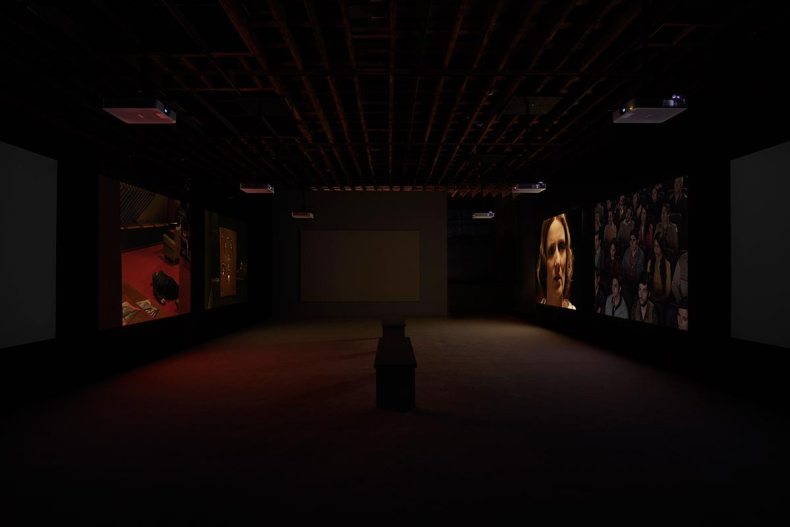As with any job, the life of an arts hack can be a dull one at times. Every day, repeated barrages of announcements, press releases and news flashes hit your inbox, and you clock off in the evening with the rhythm of constant email notifications still pinging in your ears.
Sometimes, though, you get a PR puff that you want to sing from the rooftops to the tune of Daddy Cool. Such was the case chez moi at the tail end of last year, when the National Gallery sent out an email informing members of the press that it was to stage a major Delacroix show (until 22 May).
I’ve always loved Delacroix. How could you not? Those gargantuan history paintings in the Louvre squirm with drama, their corset-ripping romanticism swallowing you up and spitting you out whole. You could spend a lifetime studying The Death of Sardanapalus. People must do, I suppose. It’s vast, (just short of four metres in height and five in width), sordid, completely and utterly demented – and, though you hesitate to admit it, deliriously sexy.
Needless to say, I got pretty excited about the National Gallery’s announcement, and marched into the private view almost certain that I was about to be hit round the head with a riot of painterly histrionics. I wasn’t.
Obviously, given that Delacroix’s most celebrated works – including The Death of Sardanapalus and Liberty Leading the People – were never likely to leave the Louvre, mounting a blockbuster show devoted to him was always going to be a tough call. What the National Gallery has done instead is bring together a host of minor works – botanical paintings, landscapes, scaled-down copies – alongside others by the likes of Cézanne, Renoir and even Kandinsky. It is a teetotally sober study of Delacroix’s influence on modern art, which almost but not quite manages to suck all the fun out of its subject.
We want scale and excitement. We get nice pictures of flowers. We want heroism and virtuosity. We get endless landscapes. This is not a show without merit – its art-historical value is not in doubt, and there are some fascinating exhibits here: The Apotheosis of Delacroix, Cezanne’s barmy salute to his artistic hero alone would almost be worth the price of entry. Throw in Delacroix’s own stupendous Portrait of Baron Schwiter and you’re laughing. But where is the action? Delacroix didn’t do half measures, yet despite the fact that his name is printed on the National Gallery’s façade in lettering as tall as a bus, this exhibition feels like the diet option. I know full well that I’m asking for too much. Then again, soyez réaliste – demandez l’impossible, no?
*
Installation view, ‘Stan Douglas | The Secret Agent’ at Victoria Miro, Wharf Road, London. Courtesy the artist, David Zwirner, New York / London and Victoria Miro, London © Stan Douglas

Stan Douglas’s show at Victoria Miro’s Wharf Road HQ (until 24 March) is a puzzler. The draw here is a film adaptation of Joseph Conrad’s The Secret Agent, played out on six screens telling the story from different perspectives. Douglas has relocated the novella’s plot to 1970s Portugal, at a time when the country was adjusting to democracy after decades of right wing dictatorship and colonial warfare. Douglas reimagines the story’s labyrinthine winds of double crossing, intrigue and institutional corruption to criticise dodgy American foreign policy, framing the protagonist Verloc as the stooge of US ambitions to influence the outcome of Portugal’s first democratic elections in half a century.
You can read it two ways; first as a straight and somewhat inept thriller; second as an art film. Do we take the bad dialogue, budget production design and ropey acting as pure entertainment? If so, we’ll call it an ambitious and enjoyable B-movie and leave it there. It’s when you start thinking about it as art that things get problematic.
Douglas’s multiscreen approach can be dazzling. At one point, we see shady cop Inspector Heat spying on his boss from his car on the other side of the street. The two points of view are shown on opposing screens, and as Heat scans the façade of a building, the shot on the other side of the gallery tracks upward, apparently following his eyes. The audience is caught between surveyor and surveilled, unsure as to what’s actually going on. It’s a terrific sequence, worthy of comparison to Jacques Rivette at his most inventive.
At other points, however, you’ve got to wonder why Douglas bothered. The concept’s ambiguities are flogged to death, and you can’t help but groan at its cinematic failings. It strikes me that in making a film that sits in the grey area between mainstream cinema and video art, Douglas wants to have his cake and eat it. While it’s fun-ish as a thriller and raises intellectually stimulating possibilities, I’m not certain you can justify its failings as an entertainment by pleading artistic nuance.
*
Installation view, ‘Barry Flanagan, Animal, Vegetable, Mineral’. Image courtesy Waddington Custot Galleries, London.

Much better is Waddington Custot’s generous survey of Barry Flanagan’s early work (until 14 May). If you know Flanagan only for those folksy and slightly annoying sculptures of dancing hares he churned out from the late 1970s onwards, you might have reservations. Drop them. This show is stuffed to the rafters with marvellous works that present an artist giddy with creative imagination. We get sinister, phallic, coloured sacks filled with sand and dumped in a heap, dazzling collages and a load of funny and arresting land art efforts. Most intriguing are the vitrines of archive material, which give some idea of how he developed his best ideas. To those I hear sniff about Flanagan on a weekly basis: get yourselves to Cork Street, pronto.



